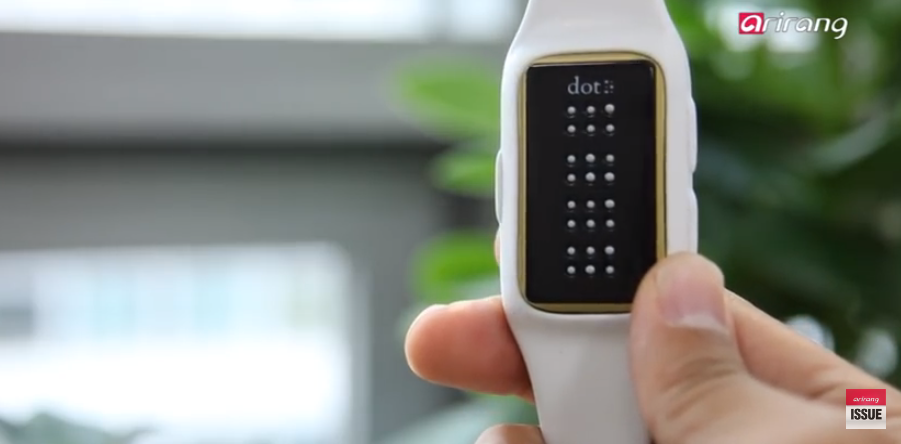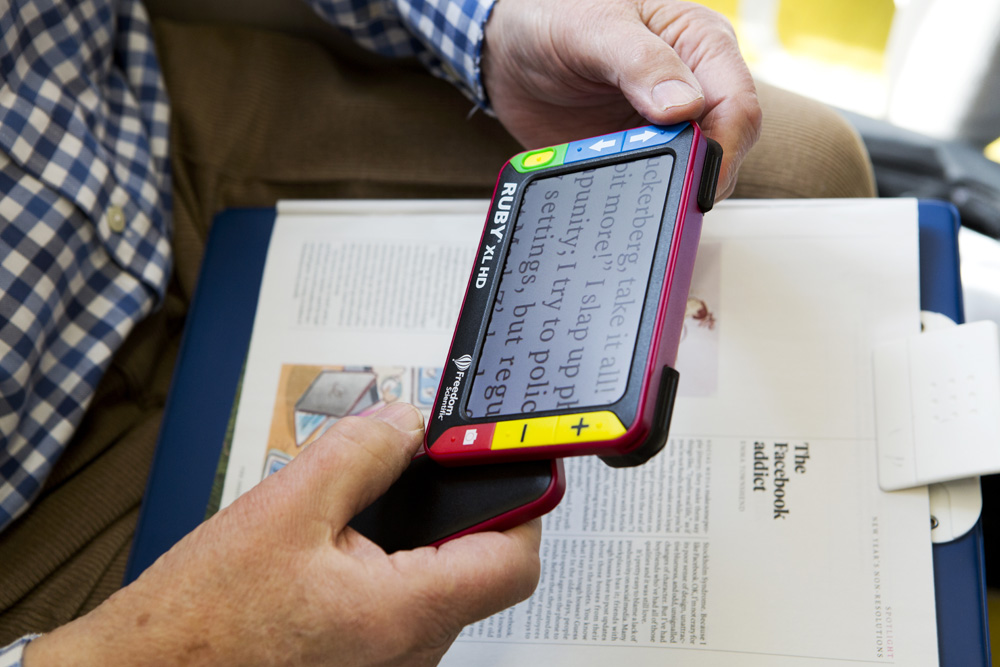OCR Devices for the Blind: Turning Text into Speech with Ease
OCR Devices for the Blind: Turning Text into Speech with Ease
Blog Article
Discover Ingenious Tools Developed for the Aesthetically Damaged
The development of ingenious tools for the aesthetically damaged stands for a significant innovation in availability and independence. Technologies such as smart glasses with AI capabilities and mobile applications created to provide acoustic summaries are improving day-to-day experiences for users.
Smart Glasses for Navigating

Smart glasses created for navigation are reinventing the way aesthetically impaired people communicate with their setting. These innovative devices make use of a mix of video camera technology, artificial intelligence, and acoustic comments to give real-time details about environments. By utilizing obstacle discovery systems, wise glasses can signal users to potential threats, allowing safer flexibility in both acquainted and unfamiliar setups.
The combination of GPS technology even more boosts navigation capabilities, allowing individuals to receive acoustic instructions as they move. This hands-free technique not only fosters self-reliance however likewise equips visually impaired people to navigate city landscapes with enhanced confidence. Additionally, lots of wise glasses are equipped with attributes that identify landmarks and street indicators, offering contextual details that enhances the individual experience.
Moreover, the development of these gadgets is constantly progressing, with business working to improve the accuracy of item acknowledgment and increase the variety of navigational features. As clever glasses come to be more available and budget-friendly, they hold the possible to significantly transform life for aesthetically impaired users. Ultimately, these innovative devices stand for a crucial step toward inclusivity, offering improved wheelchair and a better feeling of freedom for people browsing the world around them.

Mobile Application for Daily Living
How can mobile applications improve the everyday lives of visually impaired individuals? Mobile apps are reinventing the means visually damaged users browse their environments, handle day-to-day jobs, and accessibility information. These applications give important support with various functionalities, fostering freedom and enhancing high quality of life.
Several ingenious mobile applications are designed particularly for everyday living. Apps like Be My Eyes connect visually impaired customers with sighted volunteers by means of video clip telephone calls, allowing them to receive real-time help with tasks such as reading tags or browsing unknown spaces. Similarly, Seeing AI, developed by Microsoft, uses man-made intelligence to define environments, read text, and identify things, properly transforming a mobile phone into a powerful tool for daily aid.
Additionally, navigating applications tailored for the aesthetically impaired, such as Aira and BlindSquare, supply audio-based directions and ecological information, enabling customers to traverse their surroundings securely and confidently. Past navigation and immediate assistance, mobile apps likewise support company and job administration, with features that aid individuals establish pointers, develop to-do listings, and track consultations. In recap, mobile applications work as essential sources, empowering visually damaged people to lead even more independent and satisfying lives.
Wearable Technologies for Assistance
Empowerment via innovation is increasingly noticeable in the world of wearable devices made to help visually damaged individuals. These cutting-edge tools incorporate effortlessly into day-to-day live, improving navigation and supplying crucial feedback to individuals. As an example, wise glasses furnished with video cameras can identify faces and read message out loud, enabling customers to communicate even more confidently in specialist and social settings.
Another noteworthy innovation is the use of haptic feedback systems in wearable devices. These systems utilize vibrations or various other responsive signals to share information about the user's environment, such as barriers or changes in terrain, boosting mobility and security. Wearable technologies additionally include wristbands that connect to smart devices, informing individuals to notices with refined resonances, thus improving connection without dependence on aesthetic signs.
As these innovations continue to develop, they are not only boosting self-reliance for aesthetically impaired individuals however also cultivating a higher sense of inclusion in society. By bridging the space between obstacles dealt with in day-to-day living and the capacity for autonomy, wearable technologies click to read function as pivotal devices in the quest for equal rights and empowerment for those with aesthetic disabilities.
Audio Description Devices
Sound description eye exam deals devices play a vital function in enhancing ease of access for visually damaged individuals, supplying them with the capability to engage with aesthetic media. Voice-activated assistive devices. These tools offer narrated summaries of crucial visual components in films, tv shows, and live efficiencies, ensuring that individuals can totally understand the context and emotions shared with visuals
Sound summary can be integrated into various systems, including streaming solutions, cinema testings, and live theater. Several popular streaming services currently consist of audio description as an ease of access function, permitting visitors to select it conveniently. In addition to conventional media, specialized apps additionally exist, offering audio summaries for art exhibitions, Read More Here galleries, and various other cultural events.
The efficiency of audio summary depends upon the ability of the narrators, that must share visual information succinctly without detracting from the original sound. Innovations in this field are also paving the method for even more tailored experiences, where users can change the level of detail and pacing according to their choices.
Braille Innovations and Instruments
Braille devices and innovations have considerably transformed the method aesthetically damaged individuals engage with message and information. Modern developments have led to the advancement of functional tools that improve proficiency and independence among customers.
Moreover, portable Braille notetakers integrate traditional Braille input with contemporary capabilities, helping with note-taking, scheduling, and paper editing on the go. Smart glasses for the visually impaired. These portable devices typically include text-to-speech capabilities, bridging the gap in between Braille and acoustic info
Furthermore, innovative Braille printers have arised, allowing individuals to generate Braille tags, records, and academic products successfully. This availability promotes greater engagement in instructional and expert settings, ultimately promoting inclusivity.
Moreover, research into clever Braille modern technologies remains to expand. Gadgets that include synthetic knowledge are being checked out to offer real-time navigation aid and contextual info, enhancing the customer experience in varied settings. In general, these innovations mirror a commitment to encouraging visually impaired individuals via modern technology, guaranteeing they can conveniently gain access to and involve with the world around them.

Conclusion
The improvement of ingenious tools for the aesthetically impaired dramatically boosts independence and top quality of life. These modern technologies not only foster better incorporation however additionally advertise autonomy in daily activities, ultimately adding to a more easily accessible and equitable society for aesthetically impaired people.
As wise glasses come to be much more budget-friendly and easily accessible, they hold the potential to significantly transform everyday life for visually damaged individuals. Mobile applications are revolutionizing the method aesthetically damaged users navigate their atmospheres, take care of daily jobs, and accessibility information. Apps like Be My Eyes link aesthetically damaged users with sighted volunteers by means of video clip calls, enabling them to get real-time aid with jobs such as reviewing tags or browsing unfamiliar spaces.In addition, navigation apps tailored for the aesthetically damaged, such as Aira and BlindSquare, offer audio-based directions and environmental info, allowing customers to traverse their environments safely and with confidence.The innovation of cutting-edge devices for the aesthetically damaged significantly enhances independence and quality of life.
Report this page